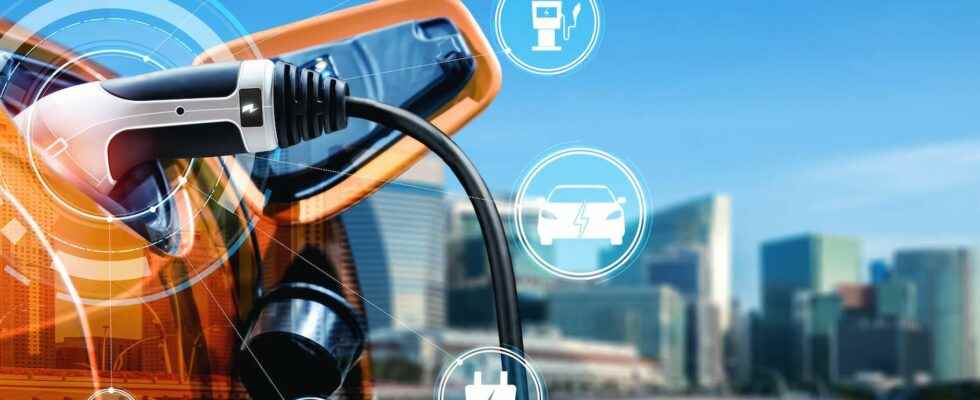You will also be interested
[EN VIDÉO] Electric car versus thermal car: the point in 5 received ideas From 2035, the sale of diesel or petrol vehicles will be prohibited in the European Union. Autonomy, cost, ecology… Are electric cars really competitive?
A few days ago, the International Agency forenergy (AIE) published its Global EV Outlooka report which provides an annual update on developments in the electric car. First observation: worldwide, sales of electric cars doubled in 2021 to reach a record level of 6.6 million – or around 10% of all cars sold worldwide. And bring to some 16.5 million the number of electric cars on the roads of the planet. This is three times more than in 2018.
In Europe, one market in particular experienced a real surge in 2021. That of plug-in hybrid vehicles. Sales of what are sometimes called PHEVs — for Plug-in Hybrid Electric Vehicle — increased by some 63% last year. But already, at the start of 2022, the attraction seems to have waned. Sales would be on the decline. Minus 8%, for example, in January 2022, compared to January 2021.
Plug-in hybrid car, a market driven by aid
How to explain it? “It is in particular aid for acquisition that has pushed the PHEV market in France. A tax policy that has long been extremely favorable to them”believes Etienne Mingot, specialist in issues related to new mobility at Targa Telematics, a company that offers intelligent solutions for connected vehicles.
A scam of climate targets and consumers, says one of the report’s authors
But, for several months, PHEVs have been in the news: according to various studies carried out mainly by non-governmental organizations (NGOs), these hybrid cars rechargeable wouldn’t be as “green” than advertised. A report commissioned by the authorities of the Swiss canton of Valais, for example, evokes “quantitative results (measurements of actual fuel consumption) which show that plug-in hybrid vehicles fall far short of their promises and offer only very slight advantages (if any) compared to a conventional thermal car”. “A scam for climate goals and consumers”according to one of the authors of the report.
Étienne Mingot confirms this. “If you are not careful how you use a plug-in hybrid vehicle, you are headed for disaster. » PHEVs can indeed consume much more – gasoline, but also electricity – than expected on paper. Bad news for drivers’ wallets. And for the carbon dioxide emissions (CO2) which can turn out to be up to four times greater than those announced by the manufacturers.
“In reality, it’s all about use”explains the specialist of Targa Telematics. To fully understand, remember that, by definition, a PHEV has a gasoline engine associated with a battery (200-300 kg) allowing a range of around 40 to 50 km in 100% electric mode. The idea is therefore to combine the advantages of one with those of the other. And that’s why “in the minds of most people, PHEV has become a kind of transition solution to 100% electric”. A way to gently learn about this new mobility. Without fear of “autonomy failure”.
Has the death knell for PHEV sounded?
The trouble is that PHEV does not only have advantages. For some, it even actually combines the disadvantages of thermal and electric. Firstly because it is heavier than its all-electric or all-thermal cousins. Precisely because it embeds the necessary for both engines. And especially a battery. A battery whose autonomy is negatively impacted by the additional weight it places on the PHEV. A battery whose weight also makes the vehicle consume more fuel in thermal mode.
Viewing PHEVs as transitional technology is a mistake
Targa Telematics experts have looked into the matter. “Our telematics solutions help analyze usage and provide recommendations that both enable financial savings while reducing emissions of CO2 »explains Étienne Mingot. “As it stands, they show that PHEVs can expect a battery life of around 40 to 50 kilometers in an urban environment. The idea is therefore to use these cars in 100% electric for daily journeys and to switch to thermal only for longer journeys which must remain on the margins. »
Thus, even if CO emissions2and the costs are higher – than those associated with a 100% thermal car – on these long journeys, all of which is offset by the savings made thanks to the use of electricity on a daily basis. Enough to allow the PHEV to remain a vehicle ” green “ if its driver is willing and simply remembers to recharge the battery regularly. “Considering PHEVs as simple transition models between thermal and electric is a mistake. Whether from an economic or ecological point of view, they are only interesting within the framework of this very specific use that we are describing. »
With the entry into force of a new European standard on CO2, interest in these particular cars is expected to continue to decline. This standard, in effect, would simply double — on paper at least — thecarbon footprint of PHEVs. What, this time, make them lose their eligibility for the ecological bonus and other tax advantages which they enjoyed until then. “It’s a safe bet that sales of plug-in hybrid cars will decline sharply when the aid still allocated to them is removed. » And it’s planned from 1er July 2022. “It will however remain at”regain control” of those that will still be in circulation. »
Interested in what you just read?
